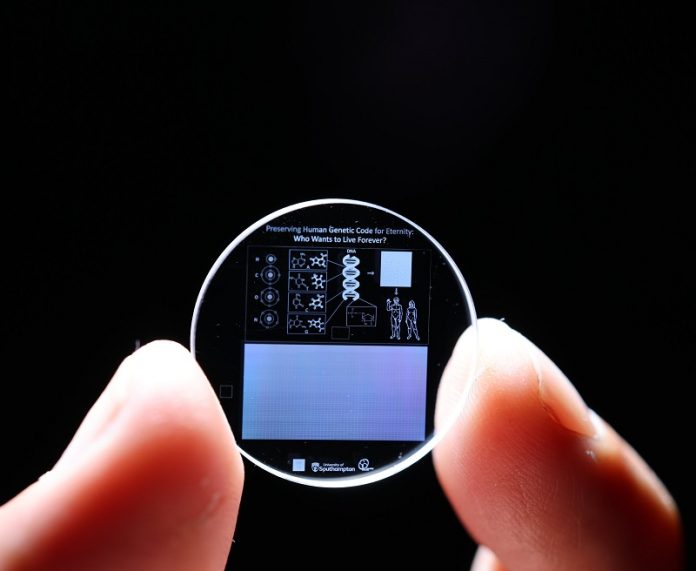
Scientists at the University of Southampton have achieved a remarkable breakthrough by storing the entire human genome on a revolutionary 5D memory crystal.
This new data storage format is designed to last for billions of years, potentially providing a blueprint to revive humanity—or even endangered species—far into the future.
The 5D memory crystal, developed by the university’s Optoelectronics Research Center (ORC), is unlike any other data storage technology.
Traditional storage formats, like hard drives or CDs, degrade over time, but these crystals can store vast amounts of information—up to 360 terabytes—without losing data for billions of years, even in extreme conditions.
The crystal holds the Guinness World Record for being the most durable data storage material, awarded in 2014.
Made from a material similar to fused quartz, the crystal is incredibly resilient. It can withstand temperatures up to 1,000°C, endure extreme freezing and fire, and resist the impact of up to 10 tons per square centimeter.
It also remains unaffected by long exposure to cosmic radiation, making it nearly indestructible.
The process of storing data in the crystal involves using ultra-fast lasers to create tiny nanostructured voids within the silica.
These voids, which are as small as 20 nanometers, allow data to be written throughout the material in five dimensions—two optical dimensions and three spatial coordinates—hence the name “5D.”
One of the most exciting applications of this technology is its potential to preserve genetic information.
Although we can’t yet create humans, plants, or animals from genetic data alone, advances in synthetic biology suggest that this might be possible in the future.
The crystal could serve as an everlasting archive of genetic information, ensuring that the blueprints for complex organisms are preserved indefinitely.
To demonstrate this concept, the research team successfully stored the entire human genome—about 3 billion letters of genetic code—on a 5D memory crystal.
Each letter was sequenced 150 times to ensure accuracy, in collaboration with Helixwork Technologies.
The crystal is now stored in the Memory of Mankind archive, a time capsule located in a salt cave in Hallstatt, Austria.
The researchers also thought about how future intelligences—whether they be advanced species or machines—might retrieve the data stored in the crystal. They inscribed a visual key on the crystal, explaining the contents and how they can be used.
This key includes symbols for the universal elements (hydrogen, oxygen, carbon, and nitrogen), the molecular structure of DNA, and the organization of genes within a chromosome.
Inspired by the plaques sent into space aboard NASA’s Pioneer spacecraft, the crystal also features visual clues to indicate that it contains the human genome.
While we don’t know if these memory crystals will ever travel through space, they are designed to outlast anything we currently have, preserving the essence of life on Earth for billions of years to come.



